 In an astonishing volte-face, Sony Online Entertainment (SOE) has announced that it now endorses the auctioning of virtual items from its massively popular online game, Everquest II – with the electronics giant pocketing a cut of the cash, naturally.
In an astonishing volte-face, Sony Online Entertainment (SOE) has announced that it now endorses the auctioning of virtual items from its massively popular online game, Everquest II – with the electronics giant pocketing a cut of the cash, naturally.
From late June 2005, Sony’s Station Exchange will provide an “Online Entertainment auction service” enabling players to buy and sell virtual items for real money.
Sony is introducing the service in an attempt to put a halt to ‘plat farmers’. These are dastardly rotters who use macros and bots to harvest rare items in games, level up characters, gain virtual money – and then flog them off on eBay.
 Personally, we’d rather buy a round of lovely real ale than shell out for the Dark Lord of Deltronia’s Mystical Turbo Sword of Mwegneli, but as we’ve reported before (Sales in Virtual Goods Surpasses $100m, Nov 2004), considerable sums of money are changing hands for virtual items.
Personally, we’d rather buy a round of lovely real ale than shell out for the Dark Lord of Deltronia’s Mystical Turbo Sword of Mwegneli, but as we’ve reported before (Sales in Virtual Goods Surpasses $100m, Nov 2004), considerable sums of money are changing hands for virtual items.
SOE director John Smedley has estimated that the market for virtual items is upwards of US$200m (€153m/£104) worldwide and the Station Exchange looks to be an attempt to grab a fat slice of this juicy pie.
So far, Sony have said that the Station Exchange system will only be available on dedicated new servers and that players will be able to transfer to an exchange server but not from one.
Naturally, gaming bulletin boards have been buzzing with debate about this development, with some expressing concerns that the ability for a rich user to “buy” success in a game effectively creates a ‘class’ divide.
‘Miss Minnie’ voiced her doubts on the urban75 gaming forum:
 “There already is a ‘virtual class system’ within the game itself – you earn status and faction standing, money, prestige, titles, fancy clothes and transport, you start living in a hovel but can move on up to luxury apartments etc – But at least till now you could assume that most people had ‘earned’ those things by playing the game.
“There already is a ‘virtual class system’ within the game itself – you earn status and faction standing, money, prestige, titles, fancy clothes and transport, you start living in a hovel but can move on up to luxury apartments etc – But at least till now you could assume that most people had ‘earned’ those things by playing the game.
Now you won’t be sure if someone is a player or a buyer, so I suppose it could be said that touches of real-life’s ‘class system’ will be impinging.
In my opinion, that is the biggest shame – these games are supposed to be fantasy worlds and now real-life threatens to intrude.”
‘Private Storm’, on the same board, was more pragmatic:
“Trading of in-game items etc goes on and it is extremely difficult to stop it.”
 “I’m not sure of the mechanics in EQII, but in WoW (World of Warcraft) they have mitigated the potential for selling items somewhat by introducing the concept of having things bind to that character when it is picked up, meaning you can’t transfer items to other players, hence no selling though eBay and the like.”
“I’m not sure of the mechanics in EQII, but in WoW (World of Warcraft) they have mitigated the potential for selling items somewhat by introducing the concept of having things bind to that character when it is picked up, meaning you can’t transfer items to other players, hence no selling though eBay and the like.”
“I think Sony has said in their press release that they can’t ignore the fact that the selling of stuff goes on and that a lot of the support they have to give players is to do with this, so they’re creating controlled systems for it to happen. Virtual ‘harm reduction’ as it were.”
“People approach these types of game with different playing styles and with different things they want to get out of it. Such games often require a large amount of time and dedication to actually see any significant progression and not everyone has the time to realise this progress. If you are a cash rich, but time poor player, but still want to play the game, buying items etc to help you get the most out of your time online doesn’t seem so bad.”
“On the other hand, there are players that are time rich, but cash poor who can achieve a large amount of success within the game simply ‘cos they have the time to do so. They’ve invested a large amount of time and money in playing the game and obviously feel that they should be able to benefit in the real world from this. Selling the stuff they acquire seems reasonable in this context.”
 For some gamers, an officially sanctioned auction site is an inevitable consequence of the growing popularity of virtual gaming, with Sony’s cut, a reasonable price to pay for eliminating a lot of scams.
For some gamers, an officially sanctioned auction site is an inevitable consequence of the growing popularity of virtual gaming, with Sony’s cut, a reasonable price to pay for eliminating a lot of scams.
If Station Exchange is successful, it may only be a matter of time before other auctions are permitted for SOE’s other games like Everquest I and Star Wars Galaxies.
Perhaps an official virtual auction site might prevent further tragedies like this story we covered last month: Legend of Mir 3 Gamer Killed After Selling Virtual Sword
Sony Station Exchange
urban75 bulletin boards
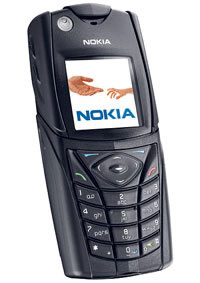 Sweatband-toting sporty types will be pleased to learn that Nokia has introduced a new handset for active-minded consumers, the Nokia 5140i camera phone.
Sweatband-toting sporty types will be pleased to learn that Nokia has introduced a new handset for active-minded consumers, the Nokia 5140i camera phone.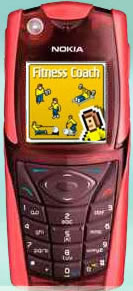 Water-bottle clutching joggers will appreciate the ‘Fitness Coach’ application, offering an ‘always-on’ personal trainer that (apparently) “encourages users to go the extra mile or finish the last set.”
Water-bottle clutching joggers will appreciate the ‘Fitness Coach’ application, offering an ‘always-on’ personal trainer that (apparently) “encourages users to go the extra mile or finish the last set.”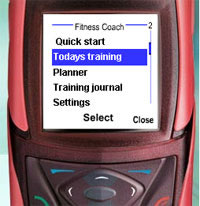 The phone also includes the Nokia Xpress audio messaging functionality, which enables users to record and send a voice message to others over the GPRS network
The phone also includes the Nokia Xpress audio messaging functionality, which enables users to record and send a voice message to others over the GPRS network BBCi has launched a programming service for digital satellite viewers showcasing short films made by ordinary folk across the UK.
BBCi has launched a programming service for digital satellite viewers showcasing short films made by ordinary folk across the UK. Video Nation broke new ground when it first hit UK TV screens – running in short slots dropped in to the programming schedule.
Video Nation broke new ground when it first hit UK TV screens – running in short slots dropped in to the programming schedule. Content on the ‘Your Stories’ service is divided into daily themes, each with its own title. “My Music”, for example, featured an eight-year-old trumpet player and a blind pianist.
Content on the ‘Your Stories’ service is divided into daily themes, each with its own title. “My Music”, for example, featured an eight-year-old trumpet player and a blind pianist.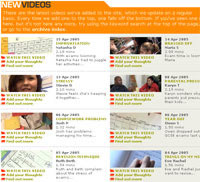 BBCi controller, Rahul Chakkara, explained the reasoning behind Your Stories service: “The BBCi audience is maturing, and is looking for content that is social and highly involving, available to them whenever they want.”
BBCi controller, Rahul Chakkara, explained the reasoning behind Your Stories service: “The BBCi audience is maturing, and is looking for content that is social and highly involving, available to them whenever they want.”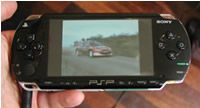 Big sighs of disappointment are heard all around Europe, as Sony officially announce the released date of the handheld gaming/media dream machine, the Sony PSP. It’s going to be 1 September 2005.
Big sighs of disappointment are heard all around Europe, as Sony officially announce the released date of the handheld gaming/media dream machine, the Sony PSP. It’s going to be 1 September 2005. Sony have announced the PlayStation Portable Value Pack at €249 (£179/US$323), which includes headphones, a 32Mb Memory Stick Duo, power supply, protective pouch, etc. The hit film Spider-Man 2 will be available on a UMD disc, free to early purchasers of PSP when they register on YourPSP.com.
Sony have announced the PlayStation Portable Value Pack at €249 (£179/US$323), which includes headphones, a 32Mb Memory Stick Duo, power supply, protective pouch, etc. The hit film Spider-Man 2 will be available on a UMD disc, free to early purchasers of PSP when they register on YourPSP.com.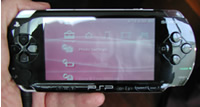 There are many tales of PSP-owners modifying their pride and joy to browser the Internet via Wi-Fi, or indeed run Instant Messaging client software.
There are many tales of PSP-owners modifying their pride and joy to browser the Internet via Wi-Fi, or indeed run Instant Messaging client software. Ericsson has reported a thumping great rise in quarterly profits, helped by the deployment of 3G networks.
Ericsson has reported a thumping great rise in quarterly profits, helped by the deployment of 3G networks. These figures fly in the face of predictions from investors and analysts that sales would drop steadily for the big telecoms firms as Chinese manufacturers took over the industry.
These figures fly in the face of predictions from investors and analysts that sales would drop steadily for the big telecoms firms as Chinese manufacturers took over the industry. In a quest to blast their already soaring profits further up into the stratosphere, Google will test a cost-per-impression bidding model for AdWords ads, letting advertisers specify groups of sites or specific sites in Google’s ad network.
In a quest to blast their already soaring profits further up into the stratosphere, Google will test a cost-per-impression bidding model for AdWords ads, letting advertisers specify groups of sites or specific sites in Google’s ad network. Google has, however, promised limitations on the animated advertising fluff that can appear on their adverts, with blinking ads that continuously loop already declared verboten.
Google has, however, promised limitations on the animated advertising fluff that can appear on their adverts, with blinking ads that continuously loop already declared verboten. The search engine heavyweights are hoping that the approach will appeal to advertisers who are fussy about where their brand appears or are aiming for a certain niche demographic.
The search engine heavyweights are hoping that the approach will appeal to advertisers who are fussy about where their brand appears or are aiming for a certain niche demographic. In an astonishing volte-face, Sony Online Entertainment (SOE) has announced that it now endorses the auctioning of virtual items from its massively popular online game, Everquest II – with the electronics giant pocketing a cut of the cash, naturally.
In an astonishing volte-face, Sony Online Entertainment (SOE) has announced that it now endorses the auctioning of virtual items from its massively popular online game, Everquest II – with the electronics giant pocketing a cut of the cash, naturally. Personally, we’d rather buy a round of lovely real ale than shell out for the Dark Lord of Deltronia’s Mystical Turbo Sword of Mwegneli, but as we’ve reported before (
Personally, we’d rather buy a round of lovely real ale than shell out for the Dark Lord of Deltronia’s Mystical Turbo Sword of Mwegneli, but as we’ve reported before (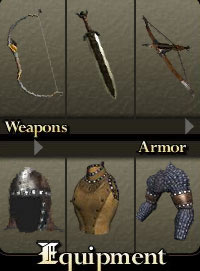 “There already is a ‘virtual class system’ within the game itself – you earn status and faction standing, money, prestige, titles, fancy clothes and transport, you start living in a hovel but can move on up to luxury apartments etc – But at least till now you could assume that most people had ‘earned’ those things by playing the game.
“There already is a ‘virtual class system’ within the game itself – you earn status and faction standing, money, prestige, titles, fancy clothes and transport, you start living in a hovel but can move on up to luxury apartments etc – But at least till now you could assume that most people had ‘earned’ those things by playing the game.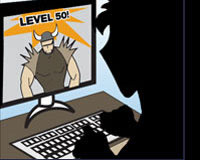 “I’m not sure of the mechanics in EQII, but in WoW (World of Warcraft) they have mitigated the potential for selling items somewhat by introducing the concept of having things bind to that character when it is picked up, meaning you can’t transfer items to other players, hence no selling though eBay and the like.”
“I’m not sure of the mechanics in EQII, but in WoW (World of Warcraft) they have mitigated the potential for selling items somewhat by introducing the concept of having things bind to that character when it is picked up, meaning you can’t transfer items to other players, hence no selling though eBay and the like.” For some gamers, an officially sanctioned auction site is an inevitable consequence of the growing popularity of virtual gaming, with Sony’s cut, a reasonable price to pay for eliminating a lot of scams.
For some gamers, an officially sanctioned auction site is an inevitable consequence of the growing popularity of virtual gaming, with Sony’s cut, a reasonable price to pay for eliminating a lot of scams. Over here in Digital-Lifestyles land, we’re always getting our ears bent by some PR-type banging on about how mobile TV is going to be “the next big app” to hit handsets.
Over here in Digital-Lifestyles land, we’re always getting our ears bent by some PR-type banging on about how mobile TV is going to be “the next big app” to hit handsets. M1 and its partners plan to knock out dramas with a specific mobile version, which will be different to the regular TV episodes, allowing viewers the choice of watching a broadcast TV version or an extension of the same show on mobile.
M1 and its partners plan to knock out dramas with a specific mobile version, which will be different to the regular TV episodes, allowing viewers the choice of watching a broadcast TV version or an extension of the same show on mobile.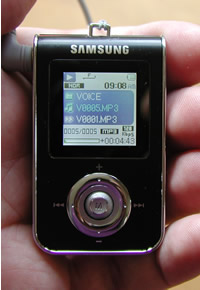 Samsung have made their intentions clear. They want to be the number one in portable music players.
Samsung have made their intentions clear. They want to be the number one in portable music players.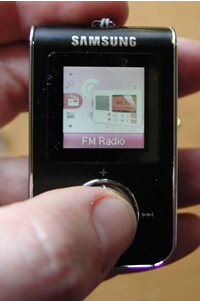 The potential of the 65k colour screen is well demonstrated by the graphically-rich menuing, but when you try to display photos and text files on it, its limitations are highlighted – it’s just too small, and when loading images, slow.
The potential of the 65k colour screen is well demonstrated by the graphically-rich menuing, but when you try to display photos and text files on it, its limitations are highlighted – it’s just too small, and when loading images, slow.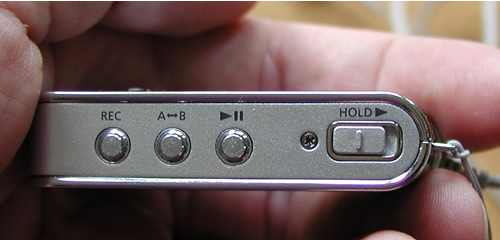
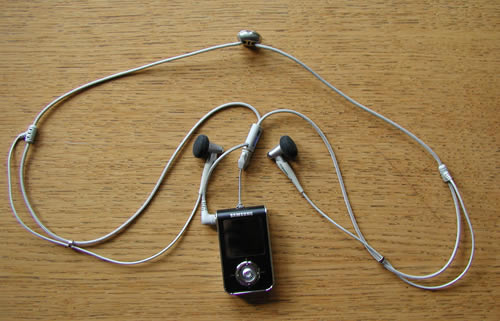
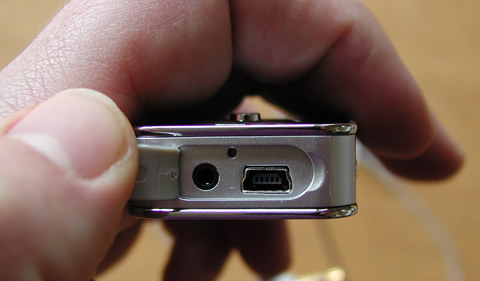
 Champagne corks were popping like manic machine gun fire at Google yesterday as the company reported a thumping fivefold increase in profits in the first quarter.
Champagne corks were popping like manic machine gun fire at Google yesterday as the company reported a thumping fivefold increase in profits in the first quarter. Revenues generated from Google’s partner sites through its AdSense programs generated $584 million, or 47 percent of revenues, – a hefty 75 percent increase over partner-related revenues a year ago.
Revenues generated from Google’s partner sites through its AdSense programs generated $584 million, or 47 percent of revenues, – a hefty 75 percent increase over partner-related revenues a year ago. Unlike several telecoms companies in the US who are hell bent on blocking free Wi-Fi hotspots, BT has stated that it has “no problems” with the concept.
Unlike several telecoms companies in the US who are hell bent on blocking free Wi-Fi hotspots, BT has stated that it has “no problems” with the concept.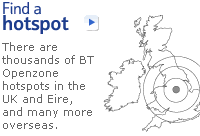 The network covers the length of Upper Street – one of the busiest streets in Islington – with the Council donating PCs to some local businesses as part of its push to boost economic activity in the area and to encourage local residents onto the Internet.
The network covers the length of Upper Street – one of the busiest streets in Islington – with the Council donating PCs to some local businesses as part of its push to boost economic activity in the area and to encourage local residents onto the Internet. Clark does not envisage US-style legal wrangling in the future for the UK and expressed confidence that if more people use Wi-Fi it will drive demand for BT’s services.
Clark does not envisage US-style legal wrangling in the future for the UK and expressed confidence that if more people use Wi-Fi it will drive demand for BT’s services.